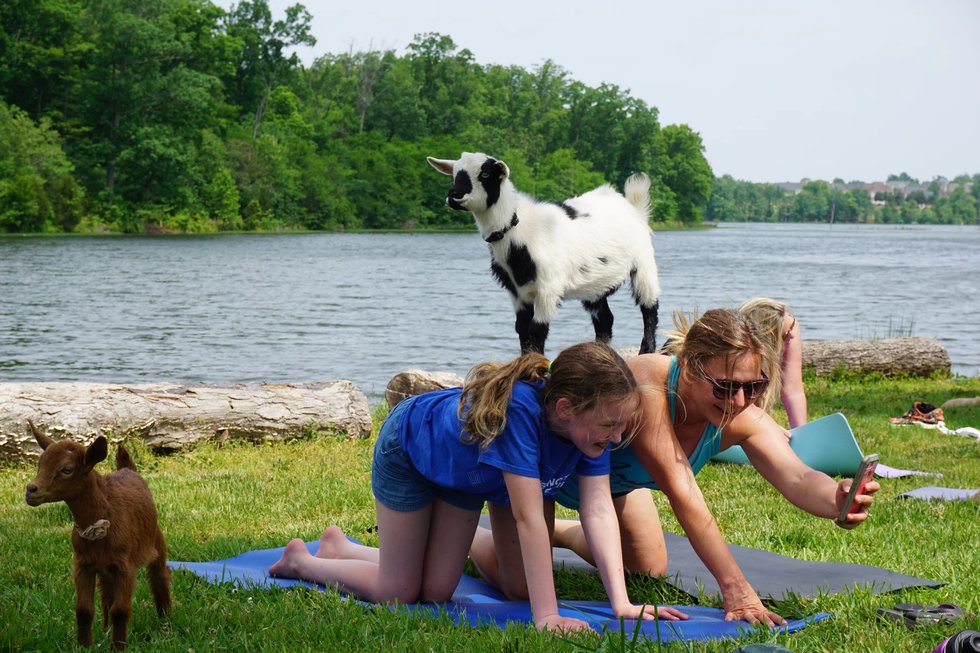A neuroscientist finds the key to connection in movement.

For some, the spark of friendship comes naturally. Others, not so much. And while friendships can be serendipitous—a combination of proximity and luck—our ability to create social ties also protects our health.
In fact, social isolation increases our risk of stroke, heart disease, even diabetes. And according to a study conducted by the National Institute on Aging, loneliness carries the health risks associated with smoking 15 cigarettes a day.
Julia Basso, Ph.D., the director of the Embodied Brain Lab at Virginia Tech, is unraveling the subtle mechanisms of human connection through her work with people for whom making those connections is a struggle. “For those coping with issues like PTSD, extreme social anxiety, or autism,” she observes, “connecting with others may not come naturally.”
Basso, a neuroscientist, is also a dancer, and the combination of disciplines gives her unique insight. She believes the brain’s response to movement is a key ingredient of connection. Through her research, she has zeroed in on what she calls “shared movement” and is exploring its impact on people with autism spectrum disorder. And, she’s earned a grant to study dance movement to promote infant bonding in new mothers with PTSD. But her work on fanning the flame that sparks friendship speaks to us all—and it extends beyond social relationships.
A Survival Skill

“Our ancestors moved over long distances, navigating to new places for food,” Basso explains. “As humans developed, movement and memory evolved to reinforce our social interactions.” Rooted in survival, shared movement creates a connection that Basso calls “interbrain synchrony.” To illustrate this, she uses sensors to track brainwave activity. When two people move together, their brains begin working in tandem, reinforcing their connection.
We see interbrain synchrony at work in “mirroring,” when one person adopts the gestures and body language of another. “When mirroring starts,” Basso says, “it’s a sign of interbrain synchrony happening in that millisecond.”
While we’re naturally wired for connection, Basso says a separate brain mechanism—her term is the “default mode network”—thwarts connecting by putting our brain on autopilot, especially during routine tasks. To break out of this mindset, Basso says, we need to cultivate “intentional awareness” of our surroundings.
Sharing Awareness
While the idea may sound a bit meta, it’s simple: “When two people bring this intentional awareness to a shared situation, it’s easier for interbrain synchrony to occur,” Basso says. It’s why we silence our phones over dinner and make eye contact when we engage in conversation. In both cases, our intention is connection.
When our shared experience is also unfamiliar, the potential for connection deepens. “Doing something new together, like learning a series of dance steps,” Basso says, “is both intentional and memorable.”
Like choreography, social interaction comes with its own set of rhythms. Consider the steps of making a social introduction: You look the person in the eye, smile, say “nice to meet you,” then shake hands. “When that timing is off,” says Basso, “it can throw off the start of a potential relationship.”
Social Improv
Basso teaches these skills through a series of exercises in her dance studio. In one, study subjects cultivate the subtle skill of “reading the room.” Basso begins by asking one person to create “their world,” by pretending to do a task—whether it’s cutting flowers in a garden, opening a stack of mail, or raking leaves.
Others in the exercise watch these movements, looking for the cues to formulate an appropriate response. If the person is raking leaves, for instance, someone else might “help” bundle them into a bag. Like any skill, Basso says, we can improve our ability to read the room with practice and awareness.
These social skills engage two parts of the brain—the prefrontal cortex and the hippocampus. “The prefrontal cortex is the seat of personality expression, planning, and moderating behavior, while the hippocampus is the center of emotion and memory,” Basso explains. With repetition, she says, we can commit these vital social skills to memory where they’re ready to access when they’re needed.
Observation in Dialogue
Noor Tasnim, a Ph.D. student at Tech and hip-hop dancer, is studying the impact of shared movement on doctor-patient relationships. Tasnim hopes his research in Dr. Basso’s Embodiment Brain Lab will reinforce connections in healthcare settings: “We see dialogue in movement, so our ability to read actions and gestures plays a huge role in our ability to connect with others,” Tasnim says.
A doctor who broaches a sensitive subject with a patient, for instance, might notice they tense in response. Is this a cue to back off? Or is it a sign to question further? When an accurate diagnosis is at stake, techniques like mirroring can be valuable for any physician looking to earn a patient’s trust and improve communication.
Tasnim and his girlfriend, Melissa Leib, both of Christiansburg, first connected in an improvisational dance class during a weight-sharing exercise. Seated with their backs pressed together, they were then asked to stand in unison. The only way to do it without toppling was to lean into each other.

“There was a point when my weight was fully on Noor,” says Leib. “I remember him saying, ‘It’s OK, I’ve got you,’ and I trusted him after that. Watching him dance with his energy bouncing off our dance crew was refreshing. I knew that’s what I wanted in my life.”
After three years together, the couple has fine-tuned their ability to read each other’s gestures and movements, and they’re now convinced they’re of one mind. “We each know what the other is thinking,” says Tasnim.
Still, connection is not limited to relationships, Basso observes. Dance movement, exercise, and meditation also help us tune into ourselves, promoting the mindful awareness that helps us cultivate wider connections.
A bit of courage helps, too, says Leib, as it did when she joined her first dance class. “If you’re trying to meet people in the world, there’s this fear that you won’t be accepted,” she says. “I learned that everyone has that same fear. But if you’re actively making an effort to meet, people appreciate that. And that’s what really counts.” JuliaBasso.com.
This article originally appeared in the June 2023 issue.








